The Louma, the first remote-controlled crane head in the history of cinema
History of the Louma
October 1970, Toulon Arsenal. Two young people doing their military service in the Armed Forces Cinema Service are asked to shoot the inside of a submarine. Confronted with the extremely tight spacs on location, they have to adapt using what they have on hand. They set up an Éclair country tripod on a narrow traveling dolly (35mm track gauge). They attached a joist to the tripod and put an inverted fluid head on its end. They attached a Caméflex to the head. They were working “blind” from the positions they’d planed for during rehearsals, and they managed to do the impossible : a reverse camera movement starting with a high-angle shot on the plotter and ending with a view of the entire command deck. The director was so excited by this shot that he asked them to film the entire documentary using this rather archaic set-up.
After finishing their military service, the two inventors began to think seriously about the possibilities of their mobile arm. Reacting to the extremely tight spaces they’d experienced in the submarine, they concentrated their efforts on perfecting a piece of equipment that would be as compact and modular as possible. Once they were satisfied with their concept, they presented it to Albert Viguier, the founder of the Alga rental agency. He found the idea to be good, and he decided to participate in the adventure with his English partners, the Samuelsons. Bit by bit, the machine came to life.
One of the critical points was trajectory correction during vertical movements. At that time, all crane arms relied on a cumbersome deformable parallelepiped mechanism (or pantograph), but the two inventors had the idea of adding a worm drive to the heart of the arm. This revolutionary internal mechanism transmits the movement of the plane to a helicoidal wheel, which was patented and was their invention, and this made it possible to produce a compact, rigid and modular crane. Besides the genius idea behind the crane’s architecture, the research team (directed by Hervé Theys) also perfected a remote-controlled head whose very design (compactness, balance) “set the standard for all future models” (according to Franck Fletcher, designer of the Power Pod heads). And because an invention never is born alone, this stage of development was suddenly put into orbit by the providential arrival of the first auto-blimped 35mm cameras (Panaflex, Arri BL) or the first miniaturized video viewers.
In early 1975, the first prototype was finally ready. Because paternity was shared, so was the name : Jean-Marie Lavalou (also sometimes nicknamed Loulou) gave the “Lou” and Alain Masseron, the “Ma”.
After a first in situ test on a forgotten film by René Clément (La Course du lièvre à travers les champs), the baptism by fire took place in 1976 on a Polanski-Guffroy film at the peak of their art on the opening and closing scenes of The Tenant (cinematography by Sven Nykvist).
Then, the rest happened quickly. From a Provençal remake of Woodstock (Riveria 76) to a 1978 James Bond space-opera (Moonraker), producers began to line up at the door. The seven units that had been manufactured to date were shared between Hollywood, Sydney, London and Paris. Jean-Marie Lavalou even traveled to California to shoot under the direction of Steven Spielberg (1941).
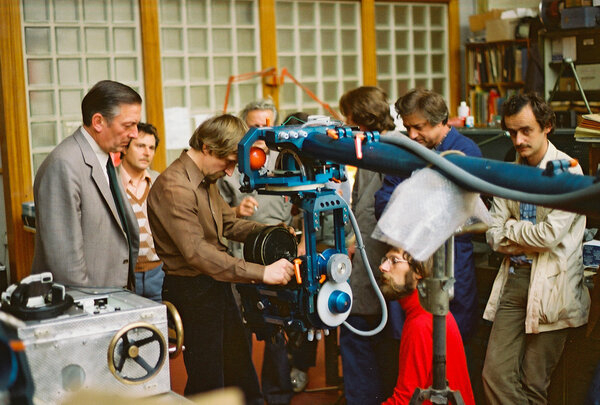
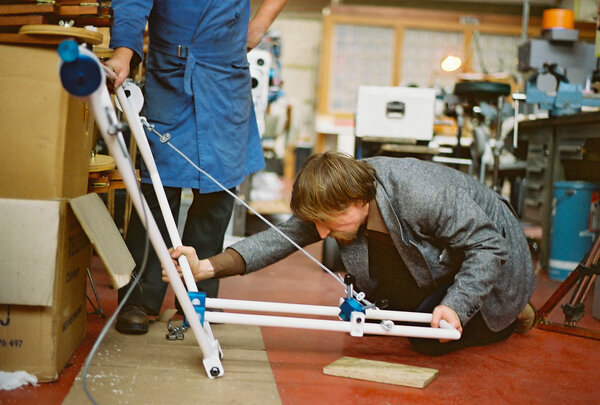
Soon, the entire world adopted the revolutionary concept. All sorts of people began to make their own heads or their own cranes. There was tough competition to meet the demand of the Anglo-American market. Despite the cloud of modular remote-controlled cranes that began to emerge, the Louma stood its ground thanks to its incomparable rigidity, its true modularity, and the very high quality of its electronic part. Then, a new technological turn came in the early 1990s with the Technocrane. A new generation of telescopic cranes developed in Germany that allowed for many rapid movements (forward or backwards movement without tracks) and compensation that enhanced rising or falling effects. Its undeniable success forced the Loumasystems team to begin to rent out Horst Burbulla’s SuperTechno telescopic crane. Simultaneously working on a telescopic version of the Louma, Jean-Marie Lavalou and his team encountered delays due to several setbacks in the industrial development of the tool. Finally, in 2007, the Louma 2 saw the light of day. A compact piece of technology on an ultra-rigid mechanical base, it was ideally positioned on the market for special effects films. Indeed, the camera position could be read in real time, and this provided postproduction with valuable data. Some of the prestigious films that used it : Hugo Cabret, by Martin Scorcese, with its chase scene in the Gare Montparnasse circa 1900. A crane that also offered a lot of options in terms of ease of shooting (shot assist technology with smart pan, smart tilt, and automatic compensation of the extension for straight line movements, etc.) and was used on a lot of blockbuster films in England or the USA. Having also diversified its range of products with the arrival of new filming systems on cable (Spidercam), the Loumasystems team, by now directed by Nicolas Pollacchi, remains one of the major players in camera equipment 50 years after the invention of the first Louma.
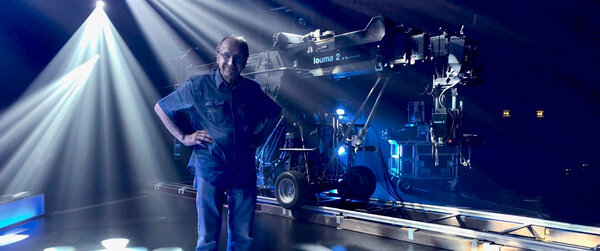
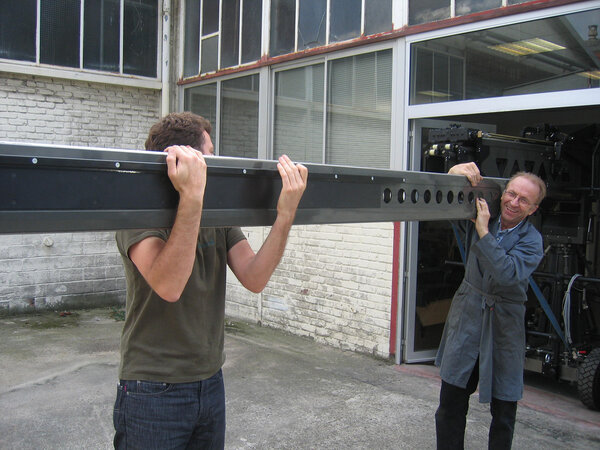
"An Oscar for the Louma !” An interview with Jean-Marie Lavalou and Alain Masseron
In February 2005, the Louma team was honored by the Motion Picture Academy when it received the prestigious technical Oscar for the invention of the first remote-controlled crane in the history of cinema. A look back at the interview published in March 2005 in the columns of Le Technicien du film.
How did you learn the news ?
JM.L : Bill Taylor, one of the greatest American specialists in VFX (The Thing, The Shadow, The Village), called us in January to announce the excellent news.
A.M : It really came as a surprise. Receiving an Oscar thirty years after the invention of the Louma seems a little strange. But the Academy was able to justify this by recognizing the inventive nature of the Louma, which, in their terms, was a “Pioneer and the inspiration for a multitude of remote-controlled machines now available to the modern filmmaker.” It’s also a way of recognizing a tool that, like the Steadicam, profoundly changed cinematographic writing during the past 20 years.
Were there screenings of famous films shot with the Louma ?
A.M : We first showed a little video montage of sequences from the film Troy, by Wolfgang Petersen, and a little demo filmed in “time lapse” style to explain to people how the crane was assembled and used. We didn’t want to show old images, like those from The Tenant or 1941, because we wanted to make sure the crane was seen as something relevant to the present and the future…
JM.L : At the end, they also showed a shot that I really liked, because it was from one of my favorite recent films, Girl with a Pearl Earring, shot by Eduardo Serra. This wasn’t a trivial choice because Scarlett Johanson, the star of that film, was also the hostess of the Academy that evening. I am still rather impatiently waiting for a souvenir photo taken in her charming company…
Who traveled with you for this unique occasion ?
A.M : Of course, the three of us were present [Lavalou, Masseron, Samuelson] to receive our precious statuettes and we were accompanied by Hervé Theys, Nicolas Pollacchi, and Alain Coiffier (director of Alga Panavision Paris).
Two other statuettes were also awarded that evening, one to Horst Burbulla for the invention and development of the SuperTechnocrane, and the other to Takuo Miyagishima, of Panavision, for all of his work on the development of lenses.
JM.L : The rules of the evening were very strict. For example, we each only were given 45 seconds to make a speech. 45 seconds to thank all the people who participated in the Louma adventure for the past 30 years, is a bit short. Because I wasn’t able to get it down to under 3 minutes during my rehearsals, I was feeling pretty nervous as I walked on stage to receive the statuette. Finally, I made a comical little speech on the theme of the American dream, and that got the message across and helped with the fact that I went over time. Finally, it was more fear than actual discomfort !
Alain, you were recently mentioning on France Inter the beginnings of the Louma concept before the well-known episode on the submarine…
A.M : In fact, the very first use of the Louma concept was in 1969, on Désirée la sangsue, a film by Jean-Claude Boussard on which I was a young director of photography. The camera was supposed to precede and turn around Désirée who was wading through a pond with water up to mid-thigh. This all had to occur without any wake from the boat visible in the frame. We set up a traveling on the lake edge and, with the help of a moving arm, we placed the camera just above the water. A bit later, I found myself working as director of photography on Michel Picard’s film beign filmed in the ECPA in the submarine (Michel and Jean-Marie were doing their military service there). The submarine location was very crowded with instruments, and so we adopted my idea of the camera arm to be able to make the right movements. I was aware of the invention, and I filed for a first patent for a camera stabilizer, and then it’s thanks to my association with Jean-Marie that the Louma was born.
Were you able to see Steven Spielberg again ?
JM.L : Unfortunately not, because he was finishing up the shoot of Star Wars. That’s why he wasn’t able to attend the ceremony. But we warmly thanked him because he is the best ambassador of our invention, because of the genius and instinctive way he took full advantage of the instrument’s possibilities. Beyond what we could have imagined, for sure. We sent him a note the following day.
Loulou in the Stars, by François Reumont
It’s not every day you see a real Oscar in flesh and gold. It was in April 2005, almost 18 years ago, and Jean-Marie Lavalou had just gotten back from Los Angeles after receiving the statuette. Proud and so happy of the evening he had spent with Scarlett Johansson (of having been awarded the precious golden little man by the star of Match Point), the chief of the Louma Tribe wanted to share his happiness with some of his close friends. He was very secretive about his personal life, and he didn’t like hosting parties at home, so he suggested we get together at my house with a few good bottles of wine and the famous statuette. Telephones were still just telephones at the time, Facebook had just been born, and WhatsApp and Instagram weren’t invented yet… So, I only have a few photos (taken with a mediocre digital camera at the time) of the moment where my friends met his friends. Jean-Marie seemed so happy to share this part of his American dream with us. That’s the image I’ll always have of him.
Goodbye Jean-Marie, we miss you a lot.
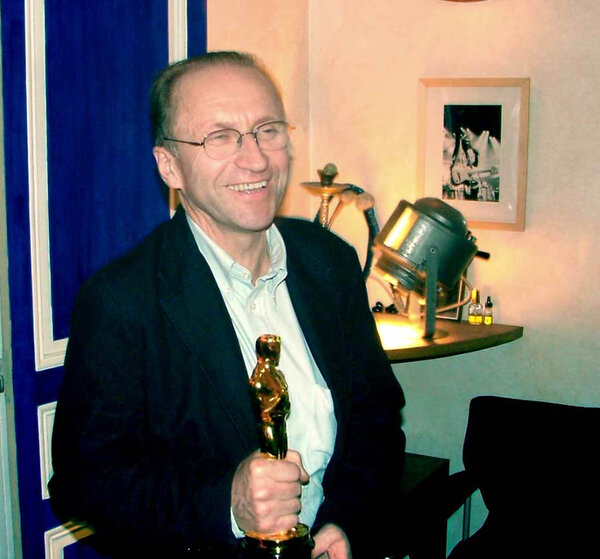
[Jean-Marie Lavalou, in April 2005]
- The tribute to Jean-Marie Lavalou is taking place at the Cinémathèque Française on 19 December 2022, from 18:30 to 23:00.
- Watch the video of the conference with Jean-Marie Lavalou and Alain Masseron at the Cinémathèque Française in February 2017.
[Grip Equipment and New Images : the example of the Louma remote controlled head. Conference with Jean-Marie Lavalou and Alain Masseron, by the Cinémathèque Française]
 En
En Fr
Fr





